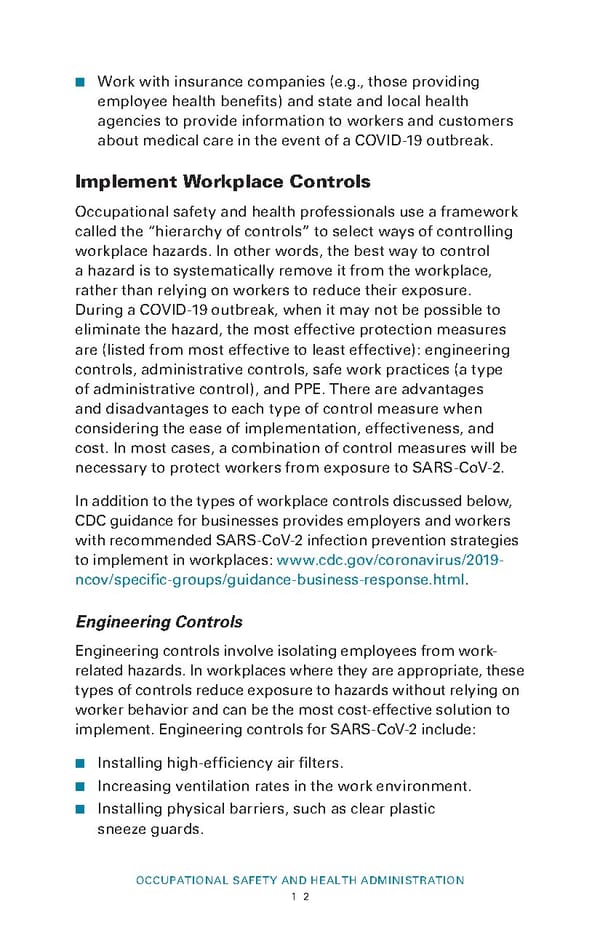■ Work with insurance companies (e.g., those providing employee health benefits) and state and local health agencies to provide information to workers and customers about medical care in the event of a COVID-19 outbreak. Implement Workplace Controls Occupational safety and health professionals use a framework called the “hierarchy of controls” to select ways of controlling workplace hazards. In other words, the best way to control a hazard is to systematically remove it from the workplace, rather than relying on workers to reduce their exposure. During a COVID-19 outbreak, when it may not be possible to eliminate the hazard, the most effective protection measures are (listed from most effective to least effective): engineering controls, administrative controls, safe work practices (a type of administrative control), and PPE. There are advantages and disadvantages to each type of control measure when considering the ease of implementation, effectiveness, and cost. In most cases, a combination of control measures will be necessary to protect workers from exposure to SARS-CoV-2. In addition to the types of workplace controls discussed below, CDC guidance for businesses provides employers and workers with recommended SARS-CoV-2 infection prevention strategies to implement in workplaces: www.cdc.gov/coronavirus/2019- ncov/specific-groups/guidance-business-response.html. Engineering Controls Engineering controls involve isolating employees from work- related hazards. In workplaces where they are appropriate, these types of controls reduce exposure to hazards without relying on worker behavior and can be the most cost-effective solution to implement. Engineering controls for SARS-CoV-2 include: ■ Installing high-efficiency air filters. ■ Increasing ventilation rates in the work environment. ■ Installing physical barriers, such as clear plastic sneeze guards. OCCUPATIONAL SAFETY AND HEALTH ADMINISTRATION 12
 Guidance on Preparing Workplaces for COVID-19
Page 13 Page 15
Guidance on Preparing Workplaces for COVID-19
Page 13 Page 15